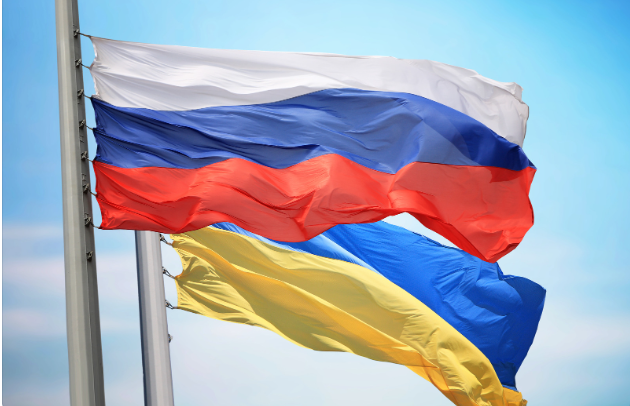
The war has reached its most dangerous moment thus far
Firms need to brace for an extremely tense geopolitical environment in the next few days and weeks, which could very well mirror the 1962 Cuban missile crisis. At least in this narrow window, firms will likely see even greater dollar strength as money flocks to the safe-haven currency, causing greater depreciation of currencies globally. Energy and other commodities would likely see a spike in prices as concerns about supply and supply chains rise notably. Within Russia, firms should expect panic-buying of essentials while delaying discretionary purchases, with possible delays on payments from local partners who may hoard cash for the short term.
Overview
- In an address to the Russian nation on September 21, President Vladimir Putin announced a partial mobilization of at least 300,000 troops, making those currently in reserve available for conscription.
- In the same address, Putin made clear his threat to escalate the conflict and respond with nuclear weapons, using “all means to defend Russia” if Ukraine and the West do not back down. He further confirmed, “I am not bluffing.”
- Meanwhile, Moscow announced that four Russian-occupied regions of Ukraine—Donetsk, Luhansk, Kherson, and Zaporizhzhia—will hold referendums to join the Russian Federation later this week.
- The West and Ukraine have called the votes in the regions a “sham.”
Our View
The war has reached a major inflection point, with Russia reverting to its ultimate point of leverage over the West with the threat of nuclear weapons. After the humiliating losses on the battlefield in Ukraine over the past month, it has become clear that Moscow is unable to respond militarily to the setback with conventional weapons and has had to resort to more extreme measures in retaliation. To that end, Moscow has announced three interrelated moves: annexation of territory, mobilization, and nuclear threats. After having delayed votes in occupied regions of Ukraine, in light of the reality of lacking full control of these territories, Moscow suddenly brought up the votes this week. In completing the planned annexation of these regions, Putin is trying at once to claim a victory in the war for the domestic audience, while signaling implicit ceasefire terms to the West by claiming these regions as Russian lands, along with the explicit threat of nuclear war if the West and Kyiv don’t agree and continue to attack these now-Russian regions.
From Putin and the Kremlin’s perspective, the war in Ukraine is seen as an existential fight for the survival of the Russian state. Put differently, Putin fears not only the stain on his legacy of a loss in Ukraine, but also likely believes in the collapse of his regime as well as the Russian state as it currently exists should Russia not achieve some victory in Ukraine. Thus, to Putin and his top security elites, all tools of retaliation—including nuclear—are justified to avoid this outcome. However, there are many mitigating factors limiting the likelihood of the use of nuclear weapons (as seen in the graphic), while the simultaneous call for mobilization indicates Moscow’s expectation that the war will not be resolved with nuclear weapons but instead more conventionally on the battlefield over the longer term.
Likewise, Putin is also upping the ante in the war by calling for partial mobilization to address the persistent problem of a manpower shortage that has plagued the Russian war effort since the invasion in February, and is one of the primary causes for Russia’s recent defeats. Clearly, the Kremlin has avoided this for the past six months in light of the severe political risks inherent in this decision. However, believing the nation itself is under threat with Ukraine currently winning the war, the move became unavoidable. At a minimum, in calling for mobilization, alongside the nuclear threat, Putin’s responses indicate that the information bubble he had been operating in has at least been somewhat punctured by the reality of events on the ground in Ukraine and in this proxy war with the West.
The trajectory of the war has become even more uncertain, though it could also be decided in the relatively near future should the West try to force Ukrainian President Volodymyr Zelenskiy to cave to Russia’s demands and stop fighting in light of the nuclear threat. Assuming the conflict persists and nuclear warfare is avoided, mobilization will fail to alter the strategic balance of the war in the near term, as it will take some three months to deploy about 100,000 of the new troops to the battlefield, and the rest coming in the following months. Major questions around the effectiveness of mobilization will persist, most critically the political risk in requiring men to serve in a war that polling suggests they are unwilling to fight in. In addition, the lack of men to train new soldiers as well as poor logistics and inadequate supplies will hamper this effort at least to some degree.
At FrontierView, our mission is to help our clients grow and win in their most important markets. We are excited to share that FiscalNote, a leading technology provider of global policy and market intelligence has acquired FrontierView. We will continue to cover issues and topics driving growth in your business, while fully leveraging FiscalNote’s portfolio within the global risk, ESG, and geopolitical advisory product suite.
Subscribe to our weekly newsletter The Lens published by our Global Economics and Scenarios team which highlights high-impact developments and trends for business professionals. For full access to our offerings, start your free trial today and download our complimentary mobile app, available on iOS and Android.

